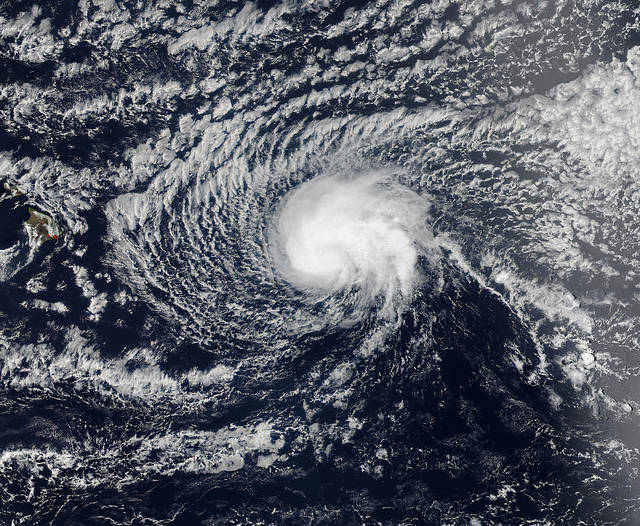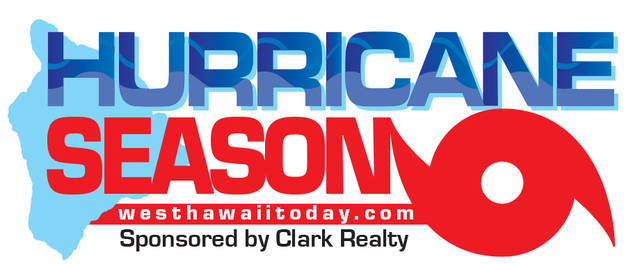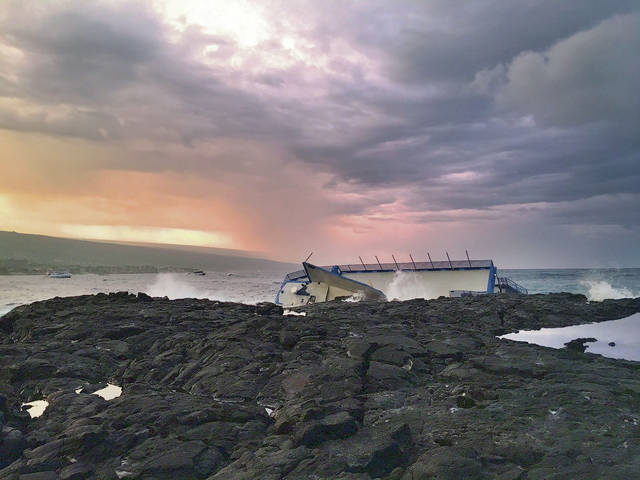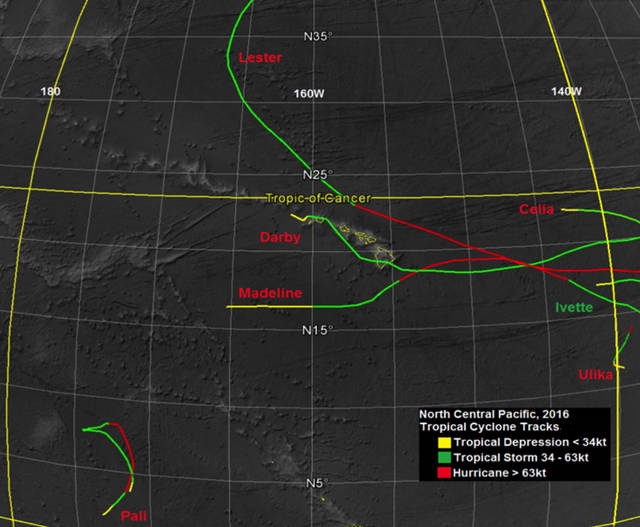KAILUA-KONA — A developing weak El Nino could result in a slightly busier than normal hurricane season this year for Hawaii, forecasters said Wednesday. ADVERTISING KAILUA-KONA — A developing weak El Nino could result in a slightly busier than normal
KAILUA-KONA — A developing weak El Nino could result in a slightly busier than normal hurricane season this year for Hawaii, forecasters said Wednesday.
Five to eight tropical cyclones — a category that includes depressions, storms and hurricanes — are expected to impact the Central North Pacific basin, which is where Hawaii is located, from June 1 through Nov. 30, said Central Pacific Hurricane Center Director Chris Brenchley.
The Honolulu-based weather center also forecast a 40 percent chance of an above-normal season, a 40 percent chance of a near-normal season and a 20 percent chance of a below-normal season. A “normal” season sees four to five cyclones pass through or develop within the basin, which spans an area north of the equator from 140 degrees west longitude to the International Date Line.
Should El Nino, which correlates with warmer ocean temperature that cause increased storm activity, come into play, it could be strong enough to produce an above-normal season. If it doesn’t develop, and ENSO neutral conditions persist, the number of storms could be on the lower end of the forecast, Brenchley said. Since 1970, during El Nino conditions there has been an average of six to seven storms annually and during ENSO neutral conditions about four per year.
Whether there’s one or a record-breaking 15 — as occurred just two years ago with the number actually being 16 if a storm that formed in late December 2015 is counted — the time to get storm ready is upon us with the official start of hurricane season just days away.
“We find ourselves another year older and, hopefully, another year wiser. We have had several close calls and direct impacts from hurricanes within the last several years. We’ve experienced some of those impacts. We must take the time to prepare so that we can be ready for should those impacts come back to our state,” Brenchley said.
“It’s a simple message: The time to prepare for hurricane season is now.”
Preparation includes developing a family evacuation plan and well-stocked emergency kit, attending community preparedness events and keeping abreast of the latest weather information by signing up for alerts and following local media. Visit www.westhawaiitoday.com/hurricane-season to keep up with the latest weather updates throughout the hurricane season.
“We are a very isolated island chain. … We must be prepared to be self-sufficient for potentially many days to several weeks before help arrives,” said Brenchley.
Last year, four to seven tropical cyclones were forecast to pass through the Central Pacific.
Six formed during the season, in addition to Hurricane Pali, an out-of-season storm that churned between Jan. 7-14, 2016. Just one made landfall on the Big Island. Tropical Storm Darby hit July 23, passing over Mauna Loa’s slopes, bringing several inches of rain to mostly east side areas, as well as wind and surf. The storm also resulted in power outages and the grounding of the Spirit of Kona vessel in Kailua-Kona.
The 2017 hurricane season also marks the 25th anniversary of Hurricane Iniki making a direct hit as a Category 4 storm on Kauai, resulting in six deaths, more than 100 injuries and more than $3 billion in damage.
Named Central Pacific tropical cyclones for 2017 will begin with Walaka, according to the center. Hawaiian names are assigned only to storms that form in the Central Pacific area. Named Eastern Pacific storms began with Adrian earlier this month.






